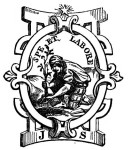Transcriber's Note
A number of typographical errors have been maintained in this version ofthis book. They are marked and the corrected text is shown in the popup.A description of the errors is found in the list at the end of the text.
THE
Ancient Phonetic Alphabet
OF
YUCATAN.
By D. G. BRINTON, M. D.

New York:
J. SABIN & SONS, No. 84 NASSAU STREET.
1870.

THE
Ancient Phonetic Alphabet
OF
YUCATAN.
Most readers are quite familiar with the fact that a well-developedmethod of picture writing, or "didactic painting," as it has beenappropriately named, prevailed through Mexico and Central America forcenturies before the conquest. But that, in the latter country, therewas a true phonetic alphabet, is one of the more recent discoveries ofAmerican archæology, and certainly one of the most interesting, as itpromises to restore to us the records of the most cultivated nation ofancient America for a number of centuries previous to the advent of thewhite man.
It is well-known that the forests of Yucatan conceal the ruins of citiesand palaces built of stones covered with inscribed characters. Alltravelers who had seen these characters were convinced that they wereintended to perpetuate ideas, but the key seemed to be irrevocably lost.Fortunately, within the last few years (to be exact, in December, 1863),a diligent antiquarian, the Abbé Brasseur de Bourbourg, unearthed in alibrary in Madrid—that of the Royal Academy of History—a copy of anunpublished description of Yucatan composed by Diego de Landa, the firstbishop of the country. In this was contained the phonetic alphabetemployed by the aboriginal Mayas, with a tolerably full, but anintolerably obscure, explanation of their mode of using it. As DeLanda's words are so important, and also not a little difficult tocomprehend, we cannot do better than transcribe them exactly as theyappear in the copy of his work published at Paris, in 1864.
He premises his remarks by saying that the natives used certaincharacters or letters with which they wrote in books their ancienthistories and sciences, and by means of these letters, and figures, andcertain signs in the figures, they could understand and teach from thesemanuscripts. The missionaries found very many of them, all of which, thegood bishop informs us, proved on examination to contain more lies andsuperstitions, and were consequently burned, which pained the natives inthe most marvelous manner (lo qual a maravilla sentian, y les davapena).
He then continues:—
"De sus letras porné aqui un a, b, c, que no permite supesadumbre
...BU KİTABI OKUMAK İÇİN ÜYE OLUN VEYA GİRİŞ YAPIN!
Sitemize Üyelik ÜCRETSİZDİR!